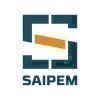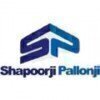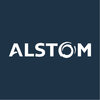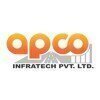Filter interviews by
Clear (1)
Wood Group Principal Engineer Interview Questions and Answers
Wood Group Principal Engineer Interview Experiences
1 interview found
(1 Question)
- Q1. Could you provide an explanation of your current job profile?
Principal Engineer Jobs at Wood Group
Top trending discussions






Interview questions from similar companies

Senior Engineer Interview Questions & Answers
Oceaneering Internationalposted on 22 Feb 2022

(1 Question)
- Q1. Related to cad and design
Interview Preparation Tips

I applied via Campus Placement and was interviewed in Dec 2016. There were 2 interview rounds.
Interview Preparation Tips
Experience: HR was really friendly and discussed resume in detail.
Round: Technical Interview
Experience: Had more discussion on technical terms on resume.
Round: Technical Interview
Experience: Asked questions on Programming and questions related to course work mentioned in the resume. The interview was completely candidate driven.
College Name: IIT Madras

I applied via Campus Placement and was interviewed in Dec 2016. There were 2 interview rounds.
Interview Preparation Tips
Experience: HR was really friendly and asked about projects in the resume.
Round: Technical Interview
Experience: Interviewer asked questions related to programming and algorithms.
Round: Technical Interview
Experience: Interviewer asked all technical details inside the resume. This round was more technical. More emphasis was on problem solving skills.
College Name: IIT Madras

I applied via Campus Placement and was interviewed in Dec 2016. There were 4 interview rounds.
Interview Preparation Tips
Experience: There were totally 8 sections to the test. But they could be broadly put under 4 categories. Firstly all questions were compulsory to attempt and there was no negative marking. Aptitude: Basic quantitative math questions were asked. There was one simple programming question where one could code in C/Java in your local IDE and upload the code file. It was a DO or DIE question, either you get the question and proceed to the next questions of the test or the test gets stopped if the code is not successfully compiled within 5 attempts. This programming question, as was told was an important criteria to filter out candidates for the next round. There was a descriptive question asking about a recent team project done.
Tips: Achievements in sports and other extra curricular activities are valued. Mention them in the resume, if applicable.
Duration: 1 hour 30 minutes
Round: Technical Interview
Experience: In this round, they look for the candidate's experience in coding in whatever language mentioned in the resume - I was asked to write some simple codes in c. I was also asked to explain some projects from the resume.
Tips: basic knowledge of data structures, resume preparation
Round: Technical + HR Interview
Experience: In this round, the questions were mostly based on the resume and the projects done. Also, HR questions like What do you know about Schlumberger, How do you perform in a team, What makes you unique from the other candidates etc. were asked. They also ask if you have any questions from your side - Better to ask questions if you have one or if you can't think upon any specific question, ask them a doubt from whatever they have said(usually they say a lot about their company and principles before they ask you for questions)
Tips: Prepare for a HR interview separately, resume preparation
College Name: IIT Madras

I applied via Naukri.com and was interviewed before Nov 2019. There was 1 interview round.
Interview Questionnaire
4 Questions
- Q1. Basics related to piperack design
- Q2. Design parameters for steel structure
- Ans.
Design parameters for steel structure
Load capacity and distribution
Material strength and durability
Environmental factors such as wind and seismic activity
Connection details and joint design
Fire resistance and protection measures
- Q3. Number of years exposure to staad
- Ans.
I have 5 years of exposure to STAAD software.
I have used STAAD for various structural analysis and design projects.
I am proficient in using STAAD for modeling, analysis, and design of steel and concrete structures.
I have experience in using STAAD for seismic analysis and design of structures.
I have also used STAAD for foundation design and analysis.
I keep myself updated with the latest versions and features of STAAD so
- Q4. Grating design and deflection limits
Interview Preparation Tips

I applied via Walk-in and was interviewed before Sep 2022. There were 2 interview rounds.

(2 Questions)
- Q1. Which column takes more load short or Long Column
- Q2. What kind of pressures will impose on the water tank walls during seismic
Interview Preparation Tips

(1 Question)
- Q1. 1. Simple asked about the Relay Co-Ordination

I applied via Naukri.com and was interviewed before Aug 2020. There were 3 interview rounds.
Interview Questionnaire
1 Question
- Q1. Whatever specified in cv.
Interview Preparation Tips


(2 Questions)
- Q1. About the technologies mentioned in the resume
- Q2. SQL, Python, Power BI , Shell
Interview Preparation Tips
Wood Group Interview FAQs
Recently Viewed
Tell us how to improve this page.
Wood Group Interviews By Designations
- Wood Group Billing Accountant Interview Questions
- Wood Group Design Engineer Interview Questions
- Wood Group Structural Engineer Interview Questions
- Wood Group Process Engineer Interview Questions
- Wood Group Engineer Interview Questions
- Wood Group Accountant Interview Questions
- Wood Group Senior Engineer Interview Questions
- Wood Group Senior Analyst Interview Questions
- Show more
Interview Questions for Popular Designations
- Principal Software Engineer Interview Questions
- Principal Consultant Interview Questions
- Senior Principal Engineer Interview Questions
- Principal Interview Questions
- Associate Principal Engineer Interview Questions
- Principal Architect Interview Questions
- School Principal Interview Questions
- Senior Principal Consultant Interview Questions
- Show more
Wood Group Principal Engineer Interview Process
based on 1 interview
Interview experience
Interview Questions from Similar Companies
Fast track your campus placements
Wood Group Principal Engineer Reviews and Ratings
based on 7 reviews
Rating in categories
|
Accountant
220
salaries
| ₹0 L/yr - ₹0 L/yr |
|
Process Engineer
113
salaries
| ₹0 L/yr - ₹0 L/yr |
|
Billing Accountant
96
salaries
| ₹0 L/yr - ₹0 L/yr |
|
Accounts Payable Accountant
67
salaries
| ₹0 L/yr - ₹0 L/yr |
|
Payroll Administrator
64
salaries
| ₹0 L/yr - ₹0 L/yr |

Baker Hughes

Schlumberger

Halliburton

TechnipFMC
- Home >
- Interviews >
- Wood Group Interview Questions >
- Wood Group Principal Engineer Interview Questions



















